Having TDD & CBRS Co-existence Issues?
Proactively protect your network from TDD co-existence and CBRS co-existence interference issues
Do you have real-time and continuous insights into your spectrum? Are you able to identify and address potential TDD and or CBRS co-existence issues before they escalate?
At thinkRF, we have made it our business to monitor spectrum continuously and we frequently come across findings of concerns, particularly in regards to cross border interference.
What’s TDD and CBRS Co-existence?
TDD Interference is sometimes referred to as co-existence. With TDD, you have time slices where some of the time slices are used for downlinks, and some are used for uplinks. When there is one transmitter, everything is fine. When a new transmitter is turned on, you need to make sure that those two transmitters are transmitting with the same frame structure.
The image on the left is an example where we have two transmitters that are all correlated on top of each other; down and a special frame and up, up, up, down, down, down, down, and down. When the frame structures of the two transmitters are all correlated on top of each other, everything is fine!
Frame Structure Mismatch
Problems emerge when frame structures of those two transmitters are different, when there is a mismatch. The image on the right is an example where we have two transmitters that are all correlated on top of each other with a frame structure mismatch, e.g., downlink on transmitter 2 overlaps with the uplink on transmitter 1.
That downlink will swamp out the weaker uplink signals and suddenly you will lose all those channels. Similarly, transmitter 1 on its last frame, the last time slot is interfering with the last uplink time slot on transmitter 2. So, these kinds of interference issues come up quite often, particularly around borders, like in the map showing Austria and neighboring countries.
Timing Mismatch
The other kind of co-existence issue happens when the timing between two transmitters’ frame structures is mismatched. They might have the same exact frame structure, but because of a slight mismatch in the time synchronization between them, you end up with interference again because downlinks are operating on top of uplinks.
The image on the left is an example where we have two transmitters with the same exact frame structures that are out of time synchronization.
CBRS Co-existence in Colorado
Two CBRS towers in Colorado operating in C-Band were found to be operating with mismatched TDD frame structures. The screenshot on the right shows downlink on transmitter 2461 overlapping with the uplink on transmitter 539805.
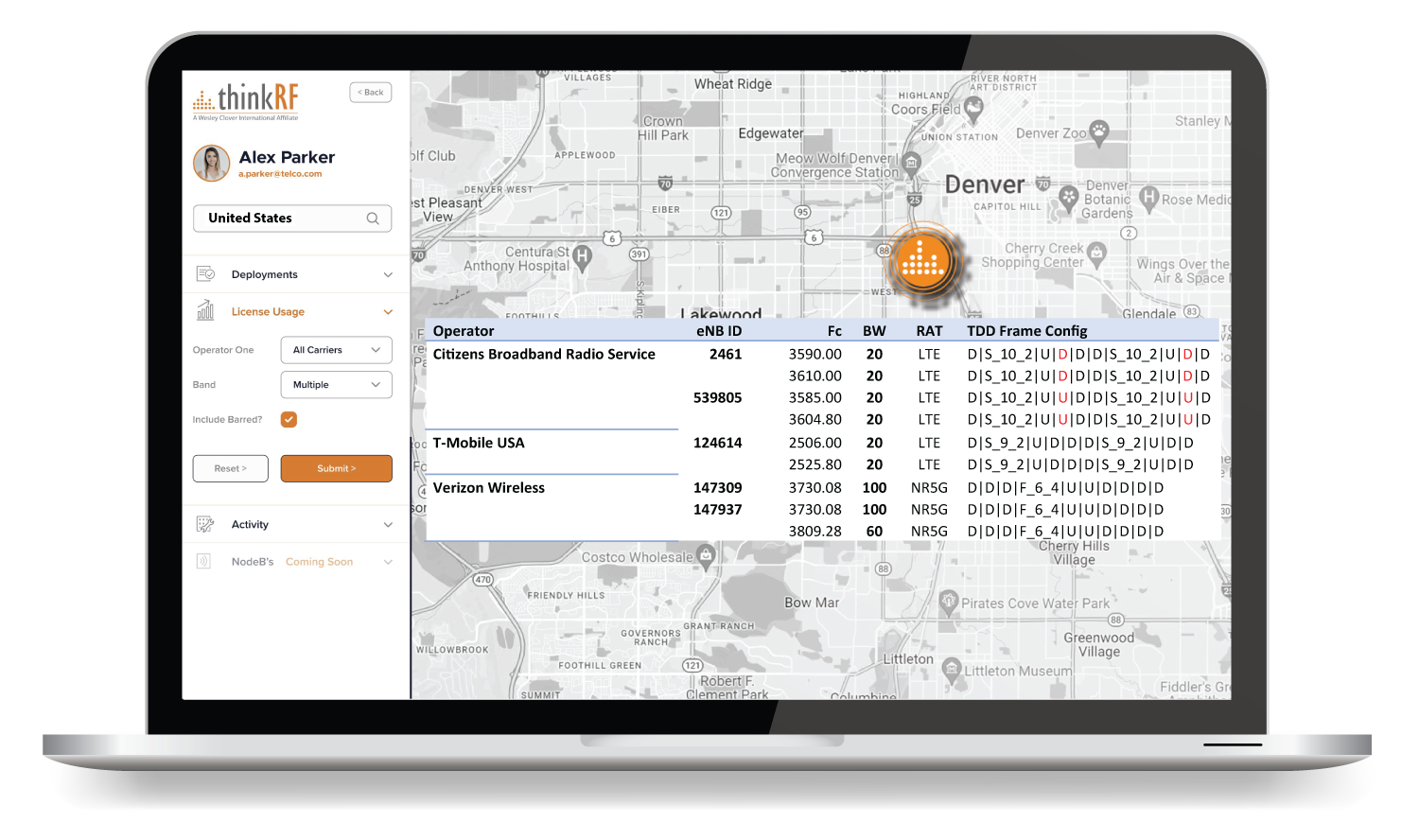
issues with CBRS Co-existence and TDD Co-existence?
What does this mean for your customers?
TDD and or CBRS co-existence is a significant issue around borders. It’s also an issue when deploying new TDD networks where there are already incumbent networks of some sort, e.g., most 5G, all C-band, WiMAX, some LTE, etc. Dropped calls, poor signal quality, or difficulty connecting to a network are some of the issues. By the time carriers’ call centers receive complaints or service cancellations, it is too late. To avoid co-existence issues, coordination is required across spectrum boundaries (not just national). This will ensure everyone is following the same set of rules.
Dropped Calls
Poor Signal Quality
Network Issues
24/7 Intelligence
Our team at thinkRF can monitor your spectrum continuously and autonomously and enable you to collect accurate, real-time and continuous data to protect spectrum and to avoid or minimize cross border interference:
Collecting data is easy and fast
By positioning our thinkRF Spectrum eXperience Management (SXM) nodes in strategic locations, we can identify in seconds what infrastructure has been deployed by which carrier, and what technologies are being used. SXM nodes are plug ‘n play. Data collection is continuous, and it is available in real-time.
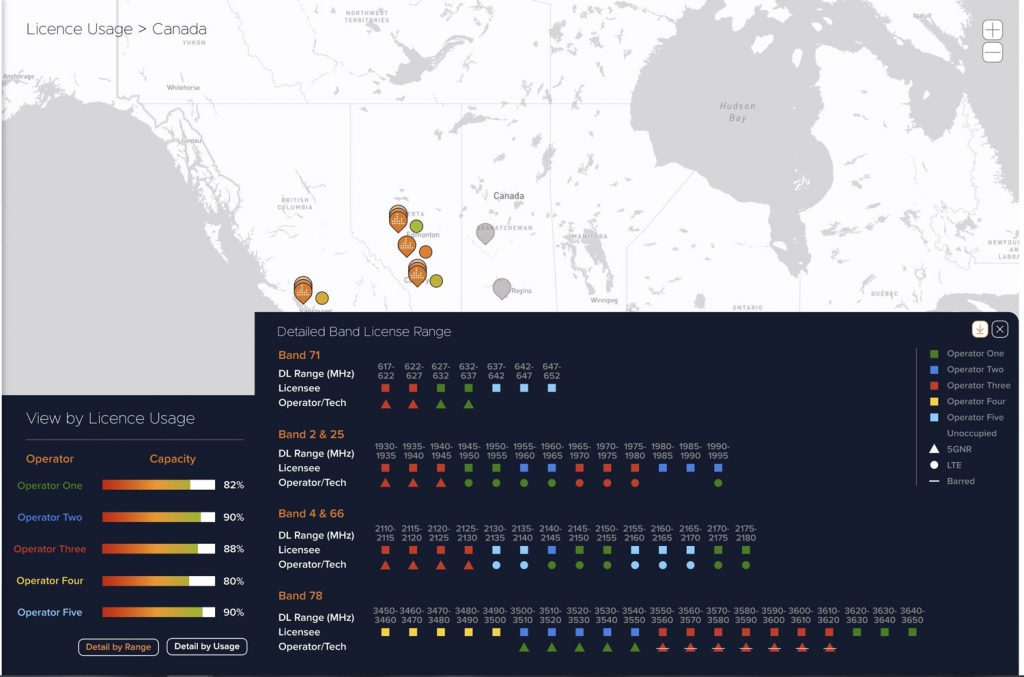
View License Usage
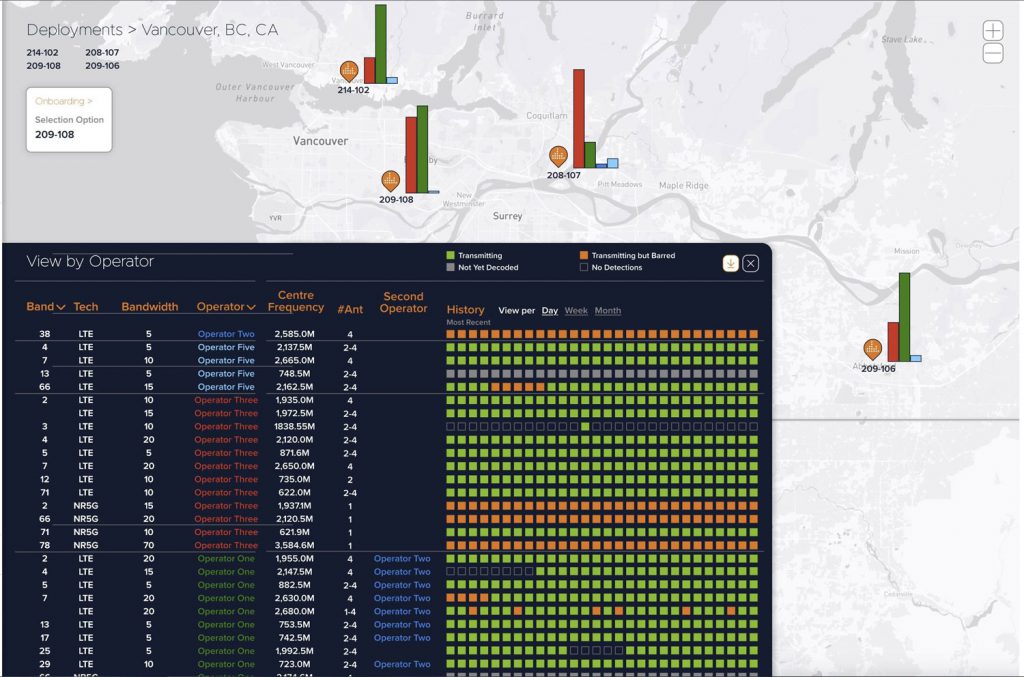
View Operators
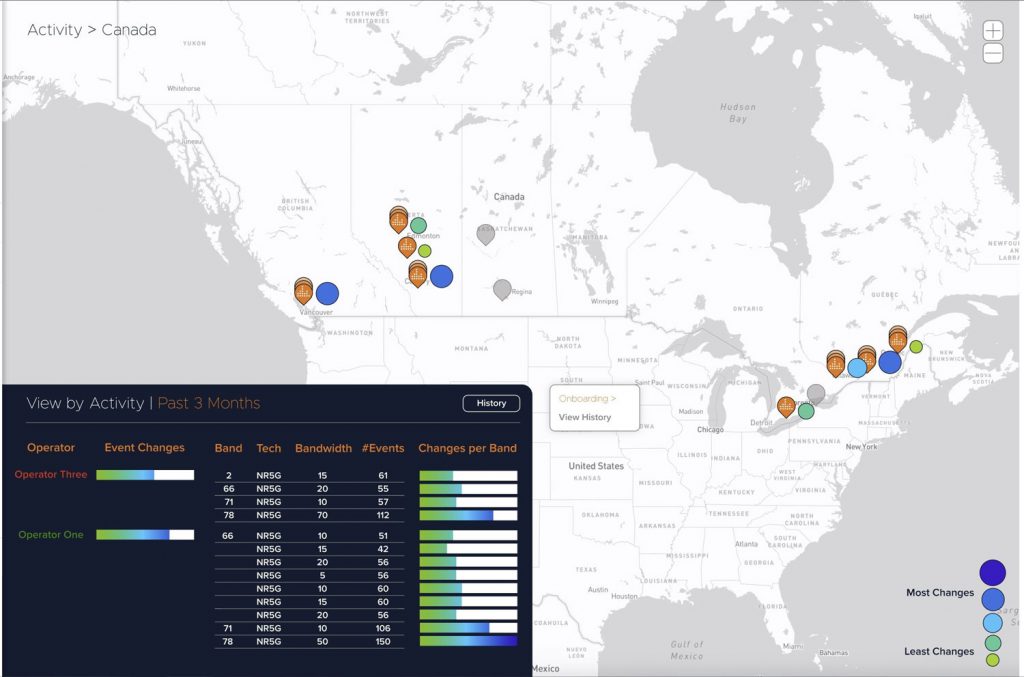
View Activities
Join the #spectrumrevolution
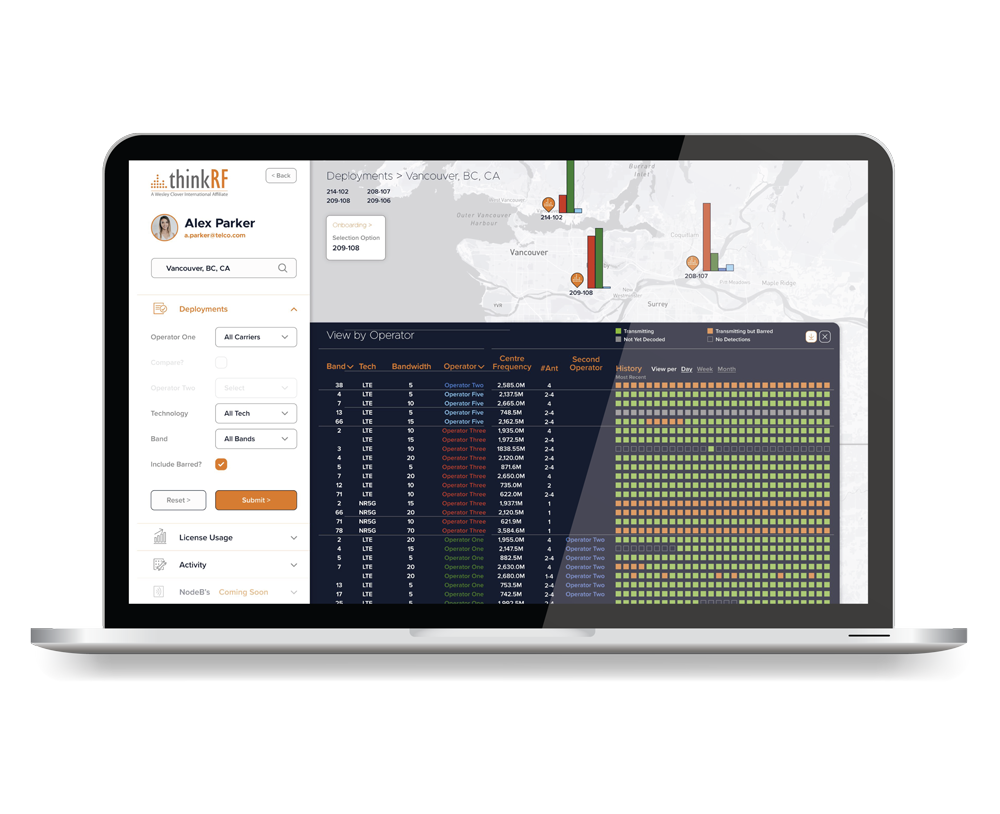
Spectrum Squatting Verified by SXM!
This case study proves spectrum squatting by an operator in Canada with concrete evidence. Read this case study to explore how a spectrum monitoring program was put in place continuously characterizing what infrastructure had been deployed by which operators and using what technologies.
Tip of the day: you will see which operators like Bell, Rogers, TELUS, and others are utilizing how much of their licensed spectrum!